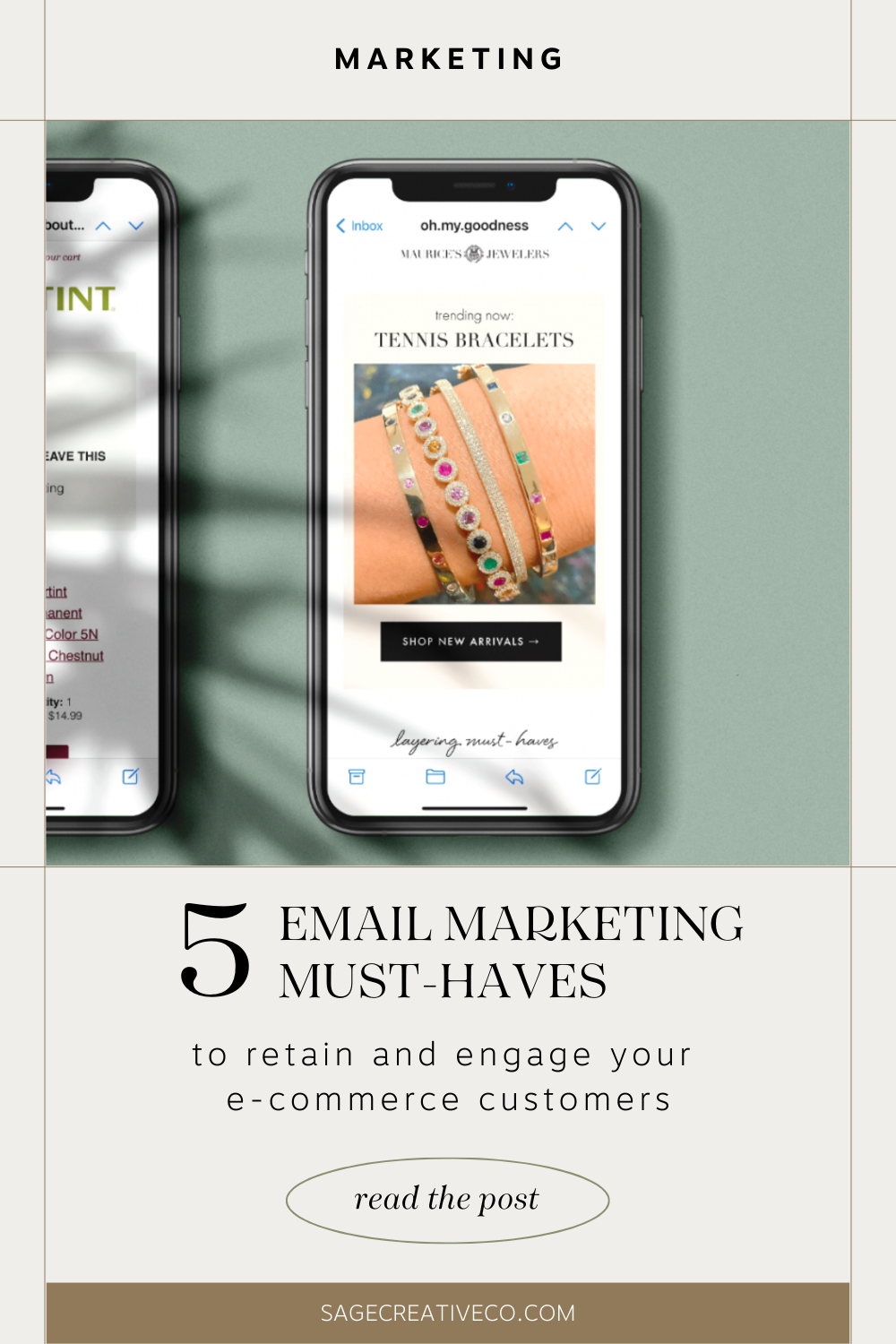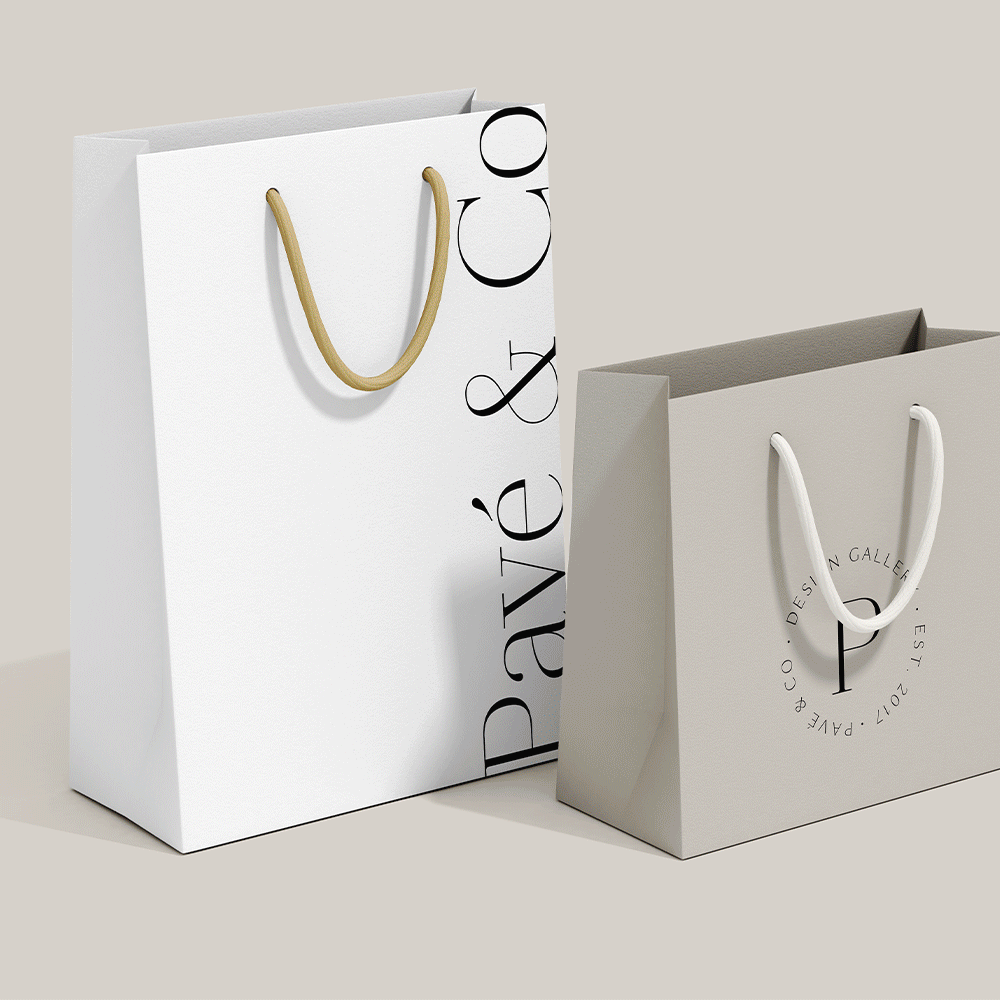If you’re looking to drive traffic and conversions on your website, the first thing we always recommend is to evaluate your email marketing efforts. While it’s easy to get caught up in creating reels and TikTok videos, it’s important to diversify your strategy and leverage email marketing to retain and engage your e-commerce customers.
Email marketing has been around for decades, yet it remains one of the most effective marketing channels for brands, especially e-commerce businesses. Email marketing offers a cost-effective and targeted way to reach customers directly in their inboxes. With an average open rate of 38% for emails versus social media’s reach rate of 12%, your content is likely to perform better with email marketing over social media alone.

Why Email Marketing Matters for E-Commerce Brands
As a small business owner, there are so many things to focus on with your business. Logistics, inventory, sales, pricing, customer service, the actual customers, the last thing you want to keep up with is the myriad of ever-changing marketing channels. That’s why we love email marketing – don’t get me wrong, we love the other channels too, but we believe, when done right, email marketing can be the most impactful tool to help drive sales and engage customers. Here are a few reasons we love email marketing:
Cost-effective
In comparison to the free platforms, like Instagram and TikTok, email marketing can feel like a more costly channel to focus on, but your ownership and return on investment make this platform a cost-effective winner. For starters, you actually own your subscriber list with email marketing, versus the lack of ownership you have with followers on your social platforms.
We love email marketing for e-commerce brands because you’re able to customize their experience and message based on where they are at in their buying journey. And, with an average email marketing ROI of $36 for every $1 spent we often recommend putting your marketing efforts on email marketing first, especially if you’re tight on time or money.
Targeted
We absolutely love how targeted and personalized email marketing can be. E-commerce brands can target their messages to specific segments of their audience based on factors like their purchase history, demographics, and behavior. This means that brands can send highly personalized messages that are more likely to resonate with their audience. Another reason why we love email marketing!
Measurable
Data is the only way we are able to make informed decisions in our marketing efforts. Email marketing is highly measurable, allowing e-commerce brands to track open rates, click-through rates, conversions, and other metrics. We use this data to make informed decisions and optimize our efforts. If you’re implementing your own email marketing for your business, we recommend looking at your metrics to see what’s working and what’s not and make decisions based on that insight. Here are our favorite email marketing key metrics to look for each month:
- Open Rate – the percentage of subscribers that opened your emails
- Click Thru Rate (CTR) – the percentage of subscribers who clicked on the emails based on the number of subscribers you sent the email to
- Sales or Ordered Product – the name may vary depending on the platform, but this is showing the revenue generated from each email campaign
- Average Order Value (AOV) – this shows you the average order value or cart value for each purchase – we like to look at this for both the store average as well as the average for subscribers
- Bounce Rate – this is letting you know how clean your email subscriber list, if you have a high bounce rate, it means you need to focus on cleaning up your subscriber list because they are not receiving your emails. Your bounce rate can affect your deliverability rate
- Soft bounce – refers to an inbox that may be full
- Hard bounce – refers to an email address that is not valid or has a typo in it
- Deliverability Rate – the percentage of emails from your subscriber list that the emails were successfully delivered to their inbox
Builds Brand Loyalty
By sending regular emails to your audience, you can build brand loyalty and keep your brand top of mind. This can lead to repeat purchases and increased customer lifetime value. As an added bonus, if you implement a perks program and integrate it with your email marketing, you can increase the lifetime value of a customer by bringing them back again and again with incentives and rewards. Plus, it’s a nice to have something to reward repeat customers with a perks program!

How E-Commerce Brands Can Use Email Marketing
Now that we’ve established why we love email marketing, let’s dig into how you can leverage it in your e-commerce business with these 5 types of emails and automation to help your drive traffic and revenue for your brand!
1. Welcome Emails
One of the most important emails that an e-commerce brand can send is a welcome series – this can also be referred to as a welcome sequence or flow. This is the first email that a new subscriber receives after signing up for your brand’s email list, and it’s an opportunity to make a great first impression. In the welcome email, e-commerce brands can introduce themselves, share their brand story, and offer a special discount or incentive to encourage subscribers to make their first purchase.
The reason a welcome sequence can be so impactful for your business is because this is when a subscriber is most engaged with your brand. This is when they are interested in learning more about your brand and offerings, you don’t want to leave them hanging, give them what they want by welcoming them into your brand with the info they’re looking for!
For welcome sequences, we recommend sending 4 – 6 emails over a 7 – 11 day period, with the first email going out immediately, and then each of the remaining emails going out every 2 or 3 days after the previous email. There’s so much more we can get into here, but for this post we are going to keep it more high level.
2. Abandoned Cart Emails
Abandoned cart emails are another important email flow for e-commerce brands. When a customer adds items to their cart, but they don’t complete the purchase, you can send an email reminding them to come back and finish checking out. These emails can include a discount or other incentive to encourage the customer to complete the purchase. We typically recommend sending 3 emails in this flow, the first two without a discount, and the third with a short-term discount code they can use to get them to convert. Creating a sense of urgency helps them take action quickly, encouraging them to come back and make the purchase!
3. Product Recommendation Emails
We love product recommendation emails as a way to personalize the messaging and offer relevant product suggestions to customers. Based on a customer’s purchase history, browsing behavior, or other factors, e-commerce brands can send emails recommending products that the customer may be interested in.
4. Seasonal and Holiday Emails
According to Omnisend, the best two months for sales and click-through rates for email marketing campaigns in 2022 were October and November. Providing evidence that customers are conditioned to purchase around these big promotional periods. Seasonal and holiday emails are a great way for e-commerce brands to tap into the excitement and anticipation of holidays and special occasions. Whether it’s a Black Friday sale or a Valentine’s Day gift guide, you can use email marketing to promote your seasonal offerings and drive sales during peak times.
We also recommend looking at the holiday and unique holiday calendars to see what aligns with your brand and business for you to tap into with these seasonal and holiday campaigns. You know what we’re talking about, those holidays like National Donut Day or Red Wine Day, those unique holidays can be used to highlight your product or brand if it truly aligns with what you offer.
5. Post-Purchase Emails
Let’s talk post-purchase emails. These emails are often overlooked because Shopify natively offers post-purchase transactional emails, but a really good post-purchase or transactional email can help build loyalty and encourage repeat purchases. Instead of stopping at the transactional email after a customer makes a purchase, you can send an email thanking them for their purchase, offer a discount on a future purchase, and invite them to leave a review or share their purchase on social media.
Those are our email marketing must-haves when it comes to nurturing and converting your subscribers for an e-commerce brand. Whether you have some, all, or none of these emails set up, it’s always good to revisit them and see what tweaks can be made to your emails. Having something is better than nothing, but being strategic about the flow and the information you share with your subscribers can be the difference in seeing success with your email marketing efforts.
Email marketing is one of our favorite tools for direct-to-consumer brands because there’s so much information, data, and personalization that you can offer with email marketing over any other marketing platform.
Have you implemented email marketing for your business? How’s it going? If you haven’t what’s holding you back? What other questions do you have to get started? Let us know below!







